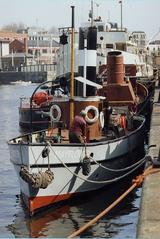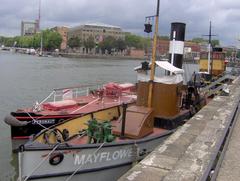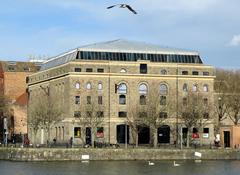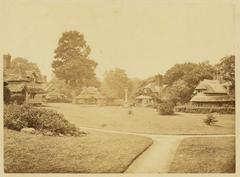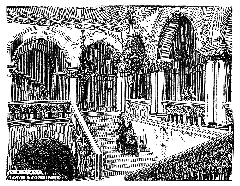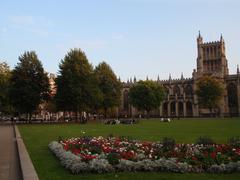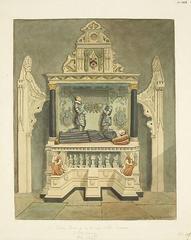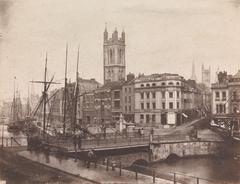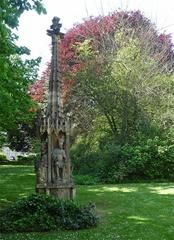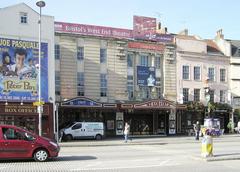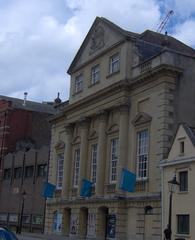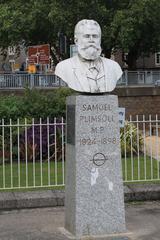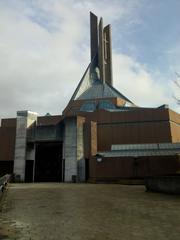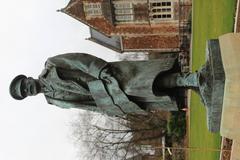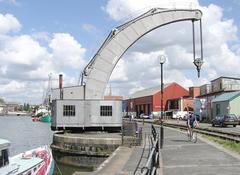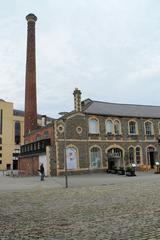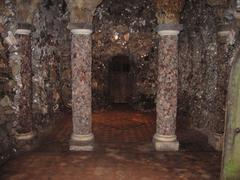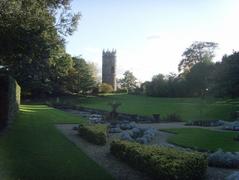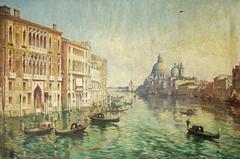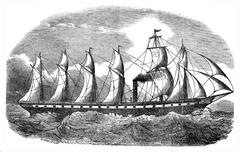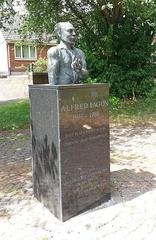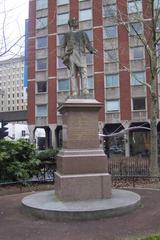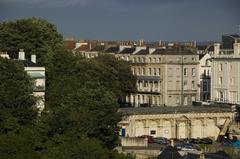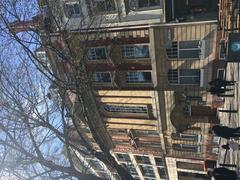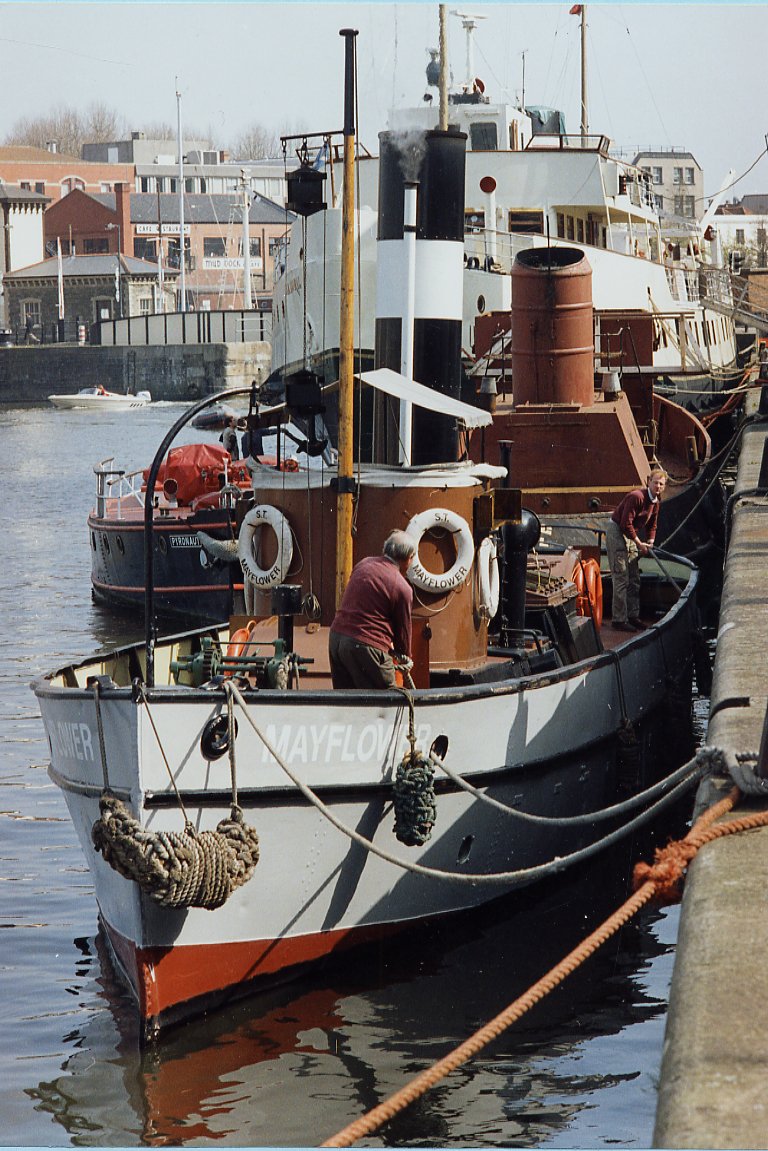
Mayflower Bristol Visiting Hours, Tickets, and Historical Sites Guide
Date: 15/06/2025
Introduction to Mayflower Bristol and Its Significance
Nestled along Bristol’s vibrant harbourside, the Mayflower steam tug stands as a living testament to the city’s maritime ingenuity and industrial legacy. Built in 1861, it is the world’s oldest surviving steam tug, offering visitors a rare encounter with Victorian engineering and a window into Bristol’s pivotal role in global maritime trade (National Historic Ships, Wikipedia). The Mayflower is not only a highlight for enthusiasts of nautical history but also anchors Bristol’s broader narrative of exploration, innovation, and seafaring culture. This story resonates throughout the city—from the historic shipyards and the M Shed museum to commemorative monuments and bustling harbourside attractions (Visit Bristol, M Shed).
This guide provides everything you need for a memorable visit: detailed historical context, up-to-date visitor information, accessibility tips, highlights of related sites, and practical advice for planning your journey into Bristol’s maritime past. For immersive experiences and real-time updates, digital tools like the Audiala app can further enrich your exploration of Bristol’s historic waterfront.
Contents Overview
- Origins and Construction of the Mayflower Steam Tug
- Operational History and Technological Adaptations
- Preservation, Restoration, and Living Heritage
- Visitor Guide: Hours, Tickets, and Tours
- Mayflower in Bristol’s Broader Maritime Heritage
- Key Historical Sites and What to Expect
- Visiting the Mayflower Monument: Access, Facilities, and Nearby Attractions
- Practical Visitor Tips and FAQs
- Cultural Insights and Local Experiences
- Summary and Recommendations
- Sources and Further Reading
Origins and Construction of the Mayflower Steam Tug
Commissioned in 1861 by towage contractor Timothy Hadley, the Mayflower was constructed by Stothert & Marten in Bristol—distinguishing itself as the oldest Bristol-built ship still afloat (Wikipedia, National Historic Ships). Featuring an iron hull, the vessel measures 63.3 feet in length and was originally powered by a single-cylinder vertical steam engine, later upgraded in 1899 for improved efficiency. Its robust design reflected Bristol’s shipbuilding prowess in the Victorian era, and adaptations such as a hinged funnel (installed in 1906) enabled it to operate under the Severn’s low bridges (BIAS Journal).
Operational History and Technological Adaptations
The Mayflower began its service towing vessels along the Gloucester & Berkeley Canal, marking a transition from horse-drawn towage to steam power. As the canal expanded and Sharpness Docks opened, the tug adapted to more demanding roles, including assisting larger steamships and navigating the challenging Severn Estuary. Unlike many of its contemporaries, the Mayflower retained its steam engine throughout its working life, resisting the mid-20th-century shift to diesel power. It also served as a training vessel, underscoring its reliability and importance in maritime operations (National Historic Ships).
Preservation, Restoration, and Living Heritage
After nearly a century of service, the Mayflower was retired in 1953 but briefly returned to duty in 1963 during an exceptionally harsh winter. Though sold for scrap in 1964, it was rescued from obscurity by Bristol Museums in 1981, thanks to the efforts of Paul Elkin and a dedicated team of volunteers. Their restoration work culminated in the vessel’s return to steaming condition by 1987, transforming the Mayflower into a beloved working exhibit and centerpiece of Bristol’s living maritime heritage (Wikipedia, National Historic Ships).
Visitor Guide: Hours, Tickets, and Tours
Visiting the Mayflower at M Shed
Location: The Mayflower is berthed outside the M Shed museum on Bristol’s Floating Harbour.
Opening Hours:
- The M Shed is open Tuesday to Sunday, 10:00am–5:00pm.
- The Mayflower can be viewed during museum hours; access onboard is available on special open days and during heritage events, especially from May to September.
Admission and Tickets:
- Entry to M Shed is free (donations encouraged).
- Tickets for Mayflower steam trips and guided tours (when available) typically cost £10/adult, £5/child, with family and group discounts.
- Advance booking is advised via the Bristol Museums website.
Guided Tours:
- Offered seasonally by knowledgeable volunteers and staff, providing in-depth historical and technical insights.
- Check the M Shed events calendar for upcoming dates.
Accessibility:
- M Shed is wheelchair accessible and provides accessible toilets and ramps.
- The Mayflower itself has limited access due to its historic design; contact the museum in advance for specific needs.
Travel and Parking:
- M Shed is located near the city centre, easily accessible by bus, ferry, or on foot.
- Parking is limited; use city centre car parks or public transportation for convenience.
Mayflower in Bristol’s Broader Maritime Heritage
A City Shaped by the Sea
Bristol’s development as a major port city is mirrored in the story of the Mayflower. The phrase “ship shape and Bristol fashion” speaks to the city’s high standards in ship maintenance, necessitated by the dramatic tidal range of the River Avon (Visit Bristol). The Mayflower’s robust engineering and adaptability reflect the city’s ethos of innovation and resilience, while its preservation is a powerful example of community-led heritage protection.
Key Historical Sites and What to Expect
Bristol Harbour
A walk along the historic harbourside reveals centuries of maritime activity. The area is open year-round and free to access. Here, you can enjoy views of working docks, historic warehouses, and vessels that once connected Bristol to the wider world (The Crazy Tourist).
M Shed Museum
This flagship museum showcases the social and industrial history of Bristol, with exhibits on shipbuilding, navigation, and transatlantic trade.
- Hours: Tuesday–Sunday, 10:00am–5:00pm
- Admission: Free; some special exhibitions/tours require tickets (M Shed)
Underfall Yard
A working boatyard and visitor centre offering guided tours and hands-on exhibits about traditional boatbuilding and maritime engineering.
- Hours: Vary; check official website
- Guided Tours: Advance booking recommended (Visit Bristol)
Commemorative Plaques and Maritime Trails
Explore Bristol’s maritime past through self-guided trails and plaques marking historic sites related to the Mayflower and other notable voyages.
Visiting the Mayflower Monument: Access, Facilities, and Nearby Attractions
Location and Access
The Mayflower Monument is located near Bristol’s historic harbour and close to the central shopping district. It is easily reachable by public transport, with Bristol Temple Meads train station and the main bus station both within a 20-minute walk.
Parking:
Nearby options include The Galleries, Cabot Circus, and Marlborough House car parks. Pre-booking via JustPark is recommended during busy periods.
Historical Significance
The monument honors the Mayflower’s 1620 voyage and Bristol’s role in maritime history, symbolizing the city’s longstanding connections to transatlantic exploration and migration.
Visiting Hours and Entry
- The monument is outdoors and accessible 24/7, free of charge.
Guided Tours and Educational Programs
Local operators and museums offer tours that include the monument and other key heritage sites such as SS Great Britain and the Bristol Harbour Railway.
Facilities and Accessibility
- Flat, paved pathways ensure wheelchair accessibility.
- Public restrooms and cafés are nearby.
- The area is generally safe, but standard city precautions are advised after dark.
Nearby Attractions
Combine your visit to the monument with stops at Bristol Harbour, SS Great Britain, St. James Priory, and the Bristol Shopping Quarter.
Practical Visitor Tips and FAQs
Practical Tips
- Use public transport to avoid parking challenges.
- Check weather forecasts and dress accordingly.
- Book tours and steam trips in advance, especially during holidays.
Frequently Asked Questions
Q: What are the Mayflower visiting hours?
A: M Shed is open Tuesday–Sunday, 10:00am–5:00pm; the Mayflower steam tug is accessible during museum hours and special open days. The Mayflower Monument is accessible 24/7.
Q: How do I book tickets for guided tours or steam trips?
A: Tickets can be purchased online via the Bristol Museums website or at M Shed.
Q: Is the Mayflower accessible for wheelchair users?
A: M Shed is fully accessible; the Mayflower tug has some limitations—contact the museum for details.
Q: Are there guided tours focused on the Mayflower story?
A: Yes, both museum-led and independent tours are available. Check schedules and book early.
Q: Are virtual or multimedia experiences offered?
A: Bristol Museums and local heritage sites offer virtual tours and multimedia exhibits.
Cultural Insights and Local Experiences
Bristol’s maritime legacy permeates its culture, from the annual Harbour Festival to local seafood cuisine and historic pubs. Educational programs at museums provide hands-on learning for all ages, while independent shops and cafés along the harbourside showcase the city’s creative spirit (CN Traveller, Britain Visitor).
Summary and Visitor Recommendations
The Mayflower steam tug and its associated sites form the heart of Bristol’s maritime identity, representing centuries of innovation, trade, and exploration. Restoration efforts have transformed the Mayflower into a living exhibit, while the city’s museums and monuments provide context and enrichment for all visitors. With accessible facilities, engaging tours, and a lively cultural scene, Bristol is an ideal destination for anyone eager to explore England’s maritime history (National Historic Ships, M Shed, Visit Bristol).
For the latest information, guided audio tours, and planning tools, download the Audiala app and connect with Bristol’s heritage organizations online.
Sources and Further Reading
- National Historic Ships: Mayflower Register
- National Historic Ships: M Shed and Mayflower
- Visit Bristol: 25 Things to Do in Bristol in 2025
- CN Traveller: Ultimate Travel Guide to Bristol
